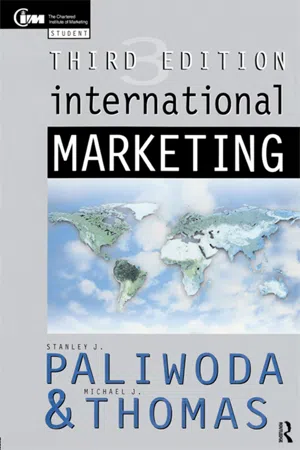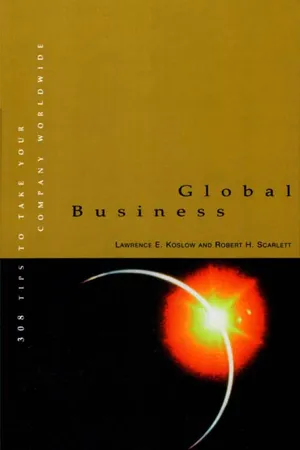Economics
Export
Export refers to the sale and shipment of goods and services produced in one country to another. It is a key component of international trade and plays a significant role in a country's economy. Exporting allows businesses to expand their market reach and can contribute to economic growth by generating revenue and creating jobs.
Written by Perlego with AI-assistance
Related key terms
Related key terms
1 of 4
Related key terms
1 of 3
4 Key excerpts on "Export"
- eBook - ePub
- Rob Dransfield(Author)
- 2013(Publication Date)
- Routledge(Publisher)
One of the key features of the UK economy is that it is a trading economy. Exporting and importing make a significant contribution to the economy. Key TermsThe UK is one of the world’s largest trading nations. It is the sixth biggest Exporter of goods after China, the US, Germany, Japan and France.Exports the value of goods and services that domestic producers provide to foreign consumers. They represent goods and services sold to other countries.Imports the value of goods and services that domestic consumers buy from overseas suppliers.Just as significantly, the UK is the second biggest Exporter of services after the US largely because of the contribution of the City of London with its international banking, insurance and financial services.Key TermBalance of trade the balance of trade of any country combines its trade in visible goods with its trade in services in a single account.Figure 11.1 (which is derived from a range of official UK statistics) shows the balance of trade set out in chart form. The key detail to pick out is that the UK typically runs a deficit in its trade in goods and a surplus in its trade in services. However, the deficit in goods is significantly more than the surplus in services so that the line illustrating total trade is typically a negative figure.Figure 11.1 Illustrating the UK balance of trade in 2010 and 2011One of the key issues of the financial crisis that started in 2007 is that it has shaken confidence in the UK financial sector. Millions of jobs in Britain are reliant on the country continuing to be seen as a strong and reliable centre for financial services.11.5 The balance of payments Key TermThe balance of payments - eBook - ePub
- Anthony J. Makin(Author)
- 2016(Publication Date)
- Routledge(Publisher)
An economy’s dependence on commodity Exports is measured as the proportion of commodity Exports in its total Exports, and it so happens that a select group of advanced economies – Australia, Canada, New Zealand and Norway – are more heavily reliant on commodity Exports than many developing commodity Exporters. Indeed, after declining slightly for three decades, commodity-Exporting advanced economies increased their dependence on commodity Exports significantly from 2000.Exportables, importables and the terms of tradeIn the previous chapter, we assumed that there were just two classes of goods and services – tradables and nontradables. However, tradables can be split again into Exportables and importables. This further distinction helps us to understand a major source of external disturbance for small open economies – changes in the terms of trade, where the terms of trade (TOT) are defined as the ratio of the price of Exportables to the price of importables.If the composition of an economy’s Exports exactly mirrored that of its imports, the TOT would not matter in a macroeconomic sense. However, many small open economies, particularly amongst developing economies, tend to Export substantially different goods from those they import in terms of value-added. Large external macroeconomic shocks are therefore frequently transmitted because the international factors influencing the prices of a small economy’s Exportables differ from those influencing its importables.At the industry level, whether a particular product is an Exportable or importable depends, amongst other things, on that industry’s comparative cost structure and total domestic expenditure on the good. Domestic firms supply tradable goods and services, while residents, other domestic firms or the government sector demand them. If the output of a particular industry is produced beyond that required to satisfy domestic demand, the industry’s output becomes Exportable. Conversely, the industry is an importable industry if domestic demand exceeds domestic production.A fundamental determinant of relative costs is the concentration of factor endowments. For instance, in relative terms, Canada has an abundance of productive land and natural resources relative to working population. These resources can be extracted, harvested or, in the case of visiting foreign tourists, simply observed for pleasure. - eBook - ePub
- Stanley Paliwoda, Michael Thomas(Authors)
- 2013(Publication Date)
- Routledge(Publisher)
The exchange process, which is the basis of international marketing, is different from that found in domestic markets and yet more than just Exporting. Exporting would require the use of only four Ps, whereas international marketing requires the six Ps, of megamarketing. To Export means simply to send or carry abroad, especially for trade or sale. Marketing goes beyond that, introducing the concept of the end-user, moving the orientation away from finding sales for a company’s existing products to analysing the market and assessing whether the company is able to produce a product or service for which there is either current or potential demand, given that other factors can be controlled, such as price, promotion and distribution (Paliwoda, 1991) . International marketing requires greater commitment, and that may mean executive time and resources, much more than does Exporting.Exporting may be simply a short-term solution to an immediate problem of under-capacity of production or over-capacity of stocks. Marketing identifies market needs, either current, potential or latent. Marketing helps to bridge the information gap between the company and the final consumer of its product. Exporting, on the other hand, is deemed to be successful whenever a sale is concluded. That sale will usually be with a trade intermediary. The company doing the Exporting has achieved a profitable sale, but knows little or nothing about the final market for his product, nor will he receive any ongoing communication about how his product is received and what customers think of it. It may be a very bad product or may simply not be selling through the distribution system to the final consumer,, but just gathering dust because trade margins are too low. In any event the final consequence will be known but not the reasons. International marketing offers then a reasoned management approach to international markets whereas Exporting is more of an adventure in realizing short-term gains.Root (1987) lists out a number of characteristics between what we may term an Export sales approach and an international marketing approach. The objectives and the criteria by which they are defined are incredibly far apart (see Table 1.9) - eBook - ePub
- Robert H. Scarlett, Lawrence E. Koslow, J.D., Ph.D.(Authors)
- 2009(Publication Date)
- Routledge(Publisher)
Exporting
DOI: 10.4324/9780080507415-6Exporting products and services goes to the very heart of global business and for most companies it might be all they choose to do. Not all Exporting is the direct sale to a purchaser in another country. Some businesses sell to customers in their domestic markets who in turn Export the product. In this case, the seller should still be interested in how its products are sold, used, and warranted as poor initial presentation might increase the difficulties for future sales.Exporting, whether direct or indirect, raises a whole host of issues, such as product modification, packaging, pricing, and inventory. These and other issues will be discussed in this section.71 Exporting—Pros and Cons
Making the decision to Export requires that you examine the advantages and disadvantages of entering the international marketplace.Advantages
- Sales and income through new markets are increased.
- Customer base is diversified and dependence on your home market is reduced.
- Increased income is available to become more competitive in the home market.
- Research and development expenditures are more affordable.
- Existing jobs are saved and more are created.
- Seasonal sales and other fluctuations are stabilized.
Disadvantages
- Existing products and/or packaging may need to be altered.
- New promotional materials need to be developed.
- Initial start-up costs must be budgeted.
- Additional administrative staff is required.
- Difficulty in currency conversions and/or collections may occur.
- Additional capacity may be required.
- Higher travel costs will be incurred.
72 Avoiding Surprises When Exporting
Once you have determined that your product definitely has a place in a particular overseas market, it's important to “stop, look and listen,”
Index pages curate the most relevant extracts from our library of academic textbooks. They’ve been created using an in-house natural language model (NLM), each adding context and meaning to key research topics.
Explore more topic indexes
Explore more topic indexes
1 of 6
Explore more topic indexes
1 of 4



